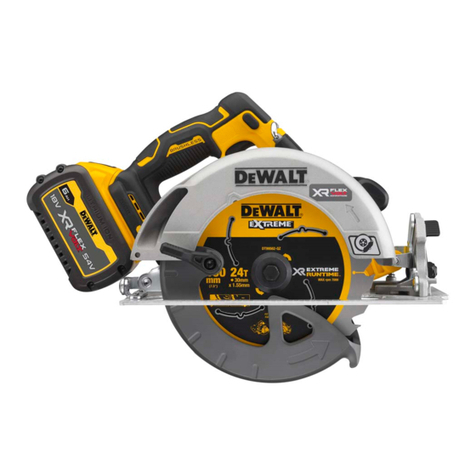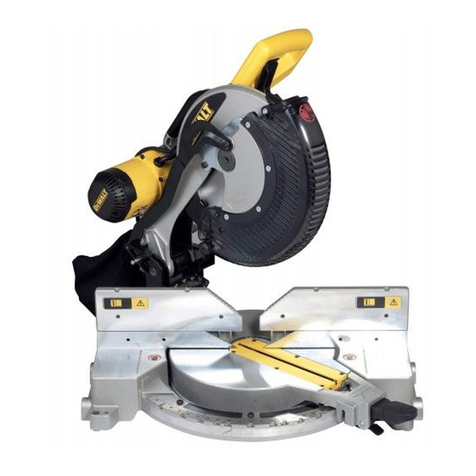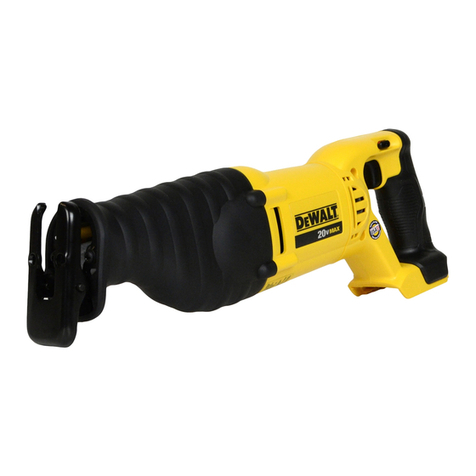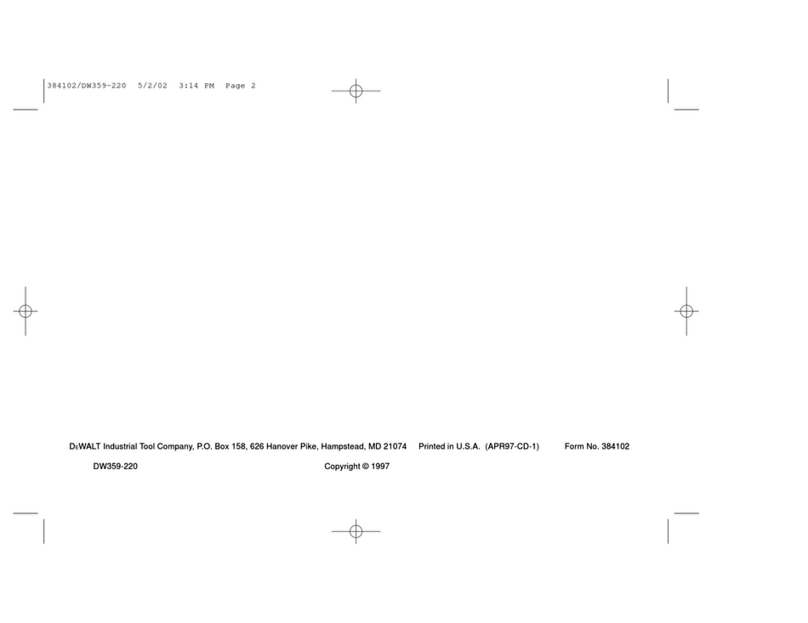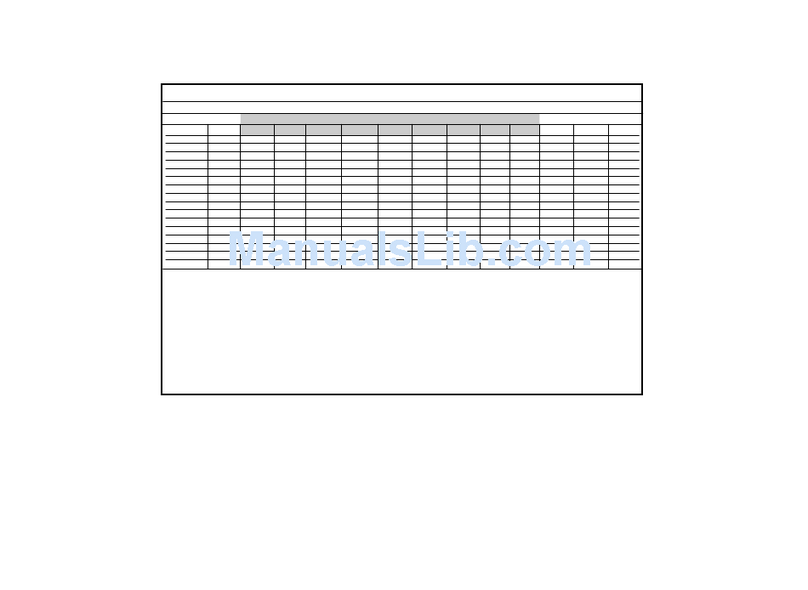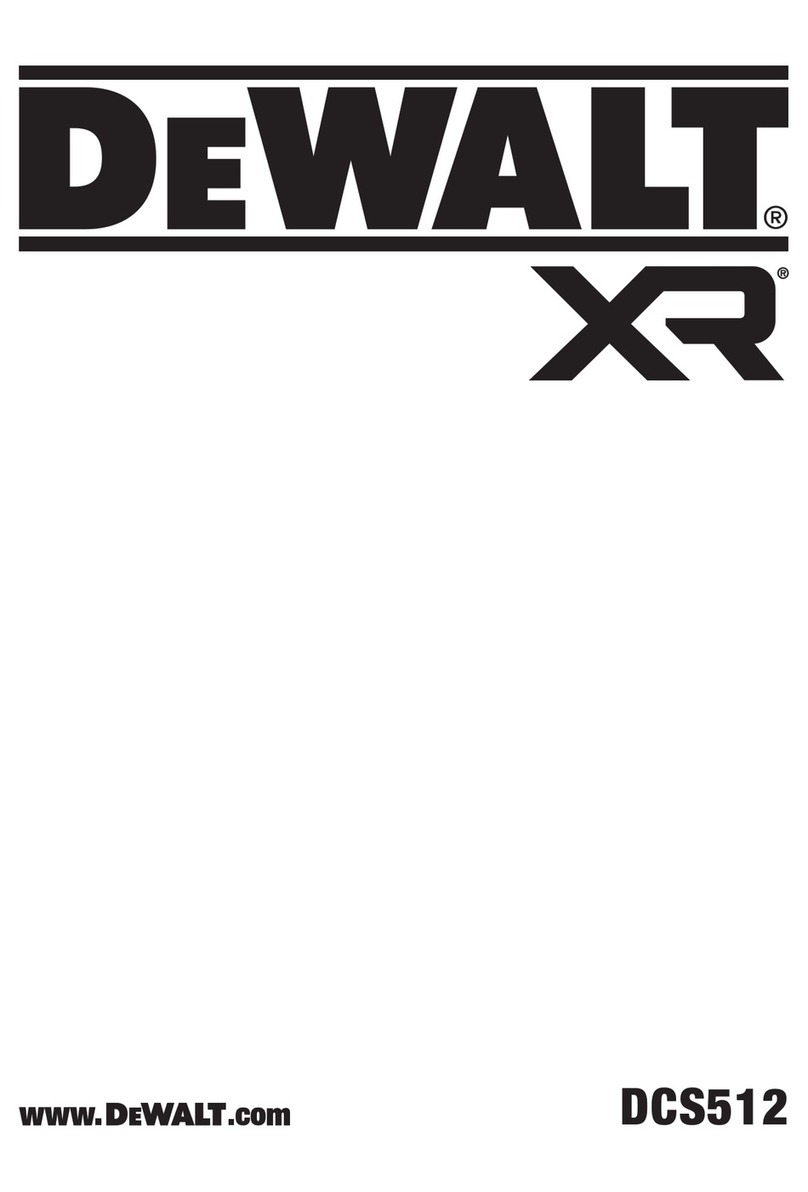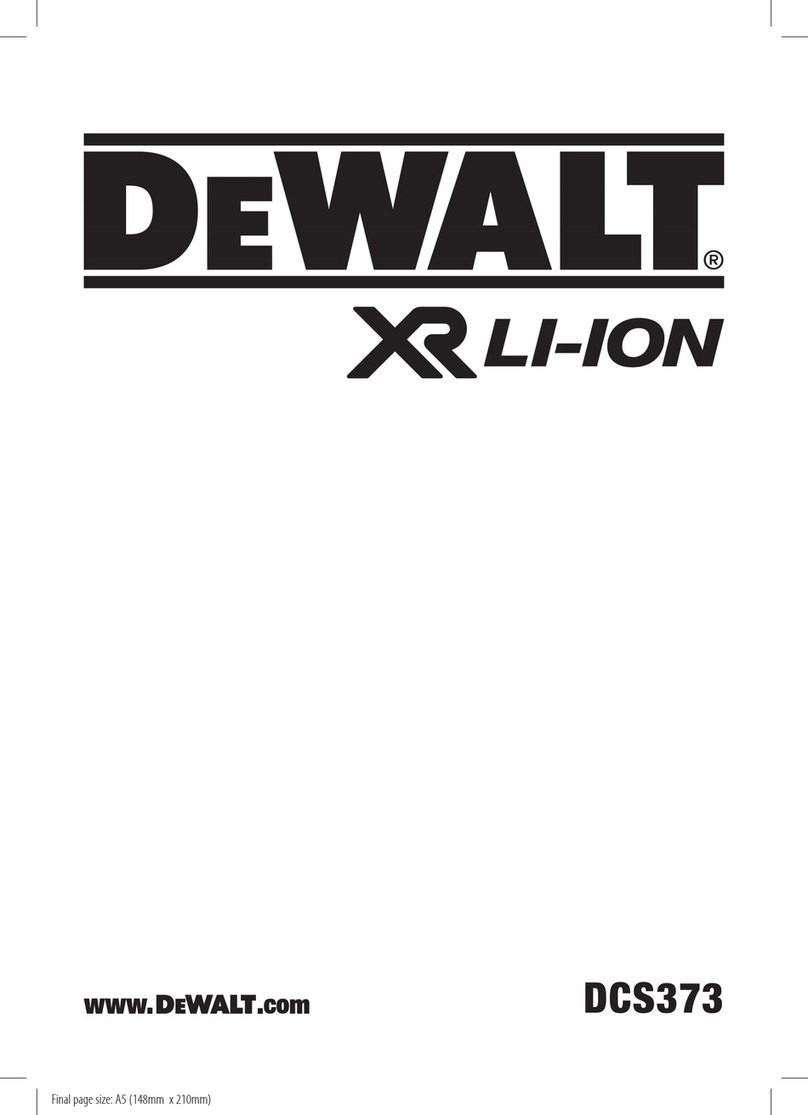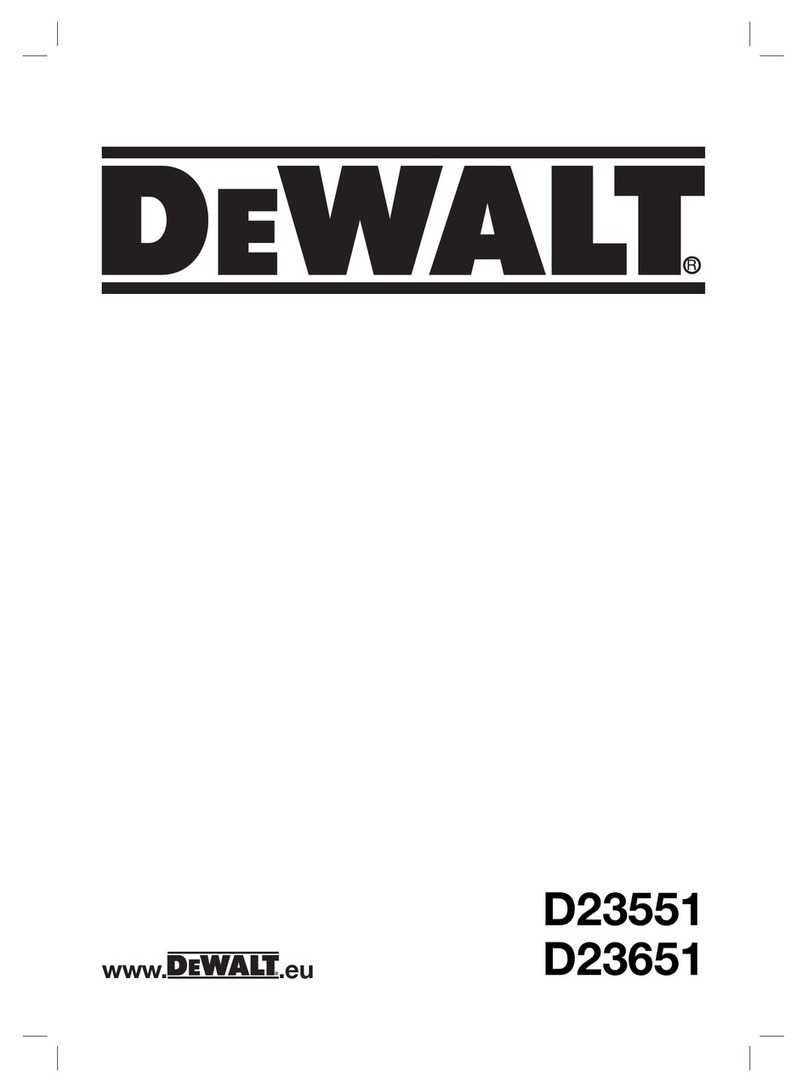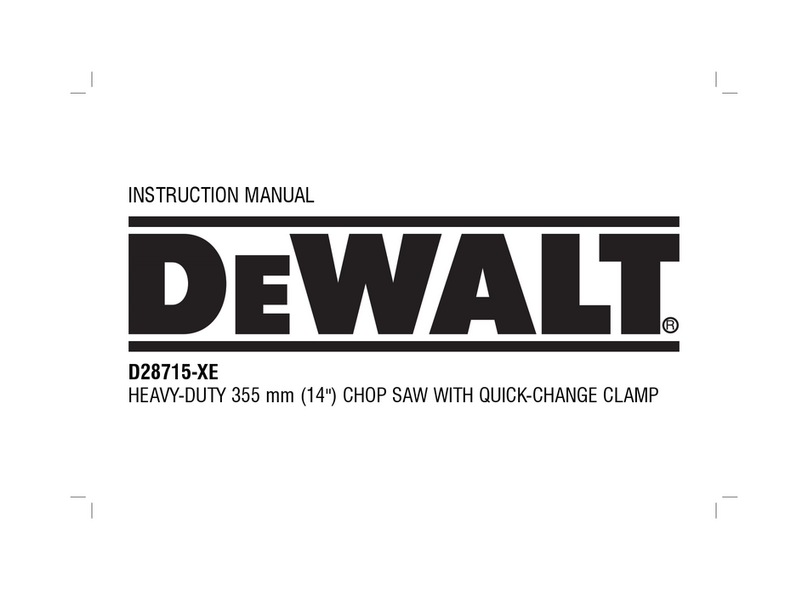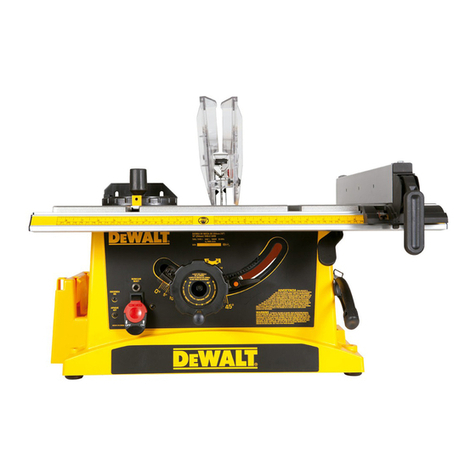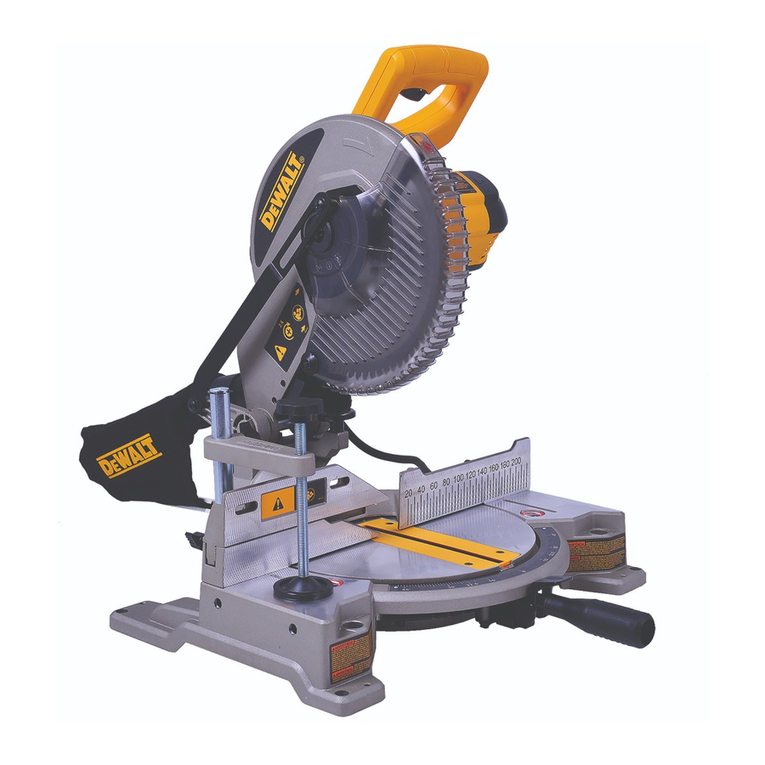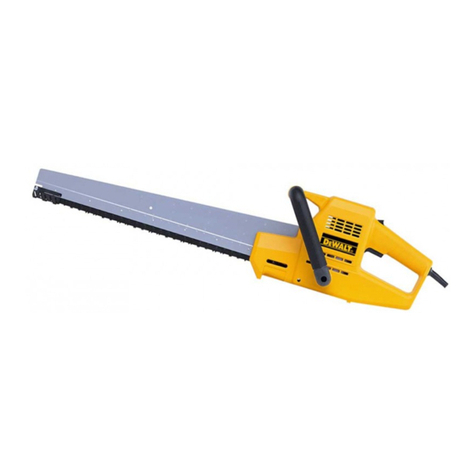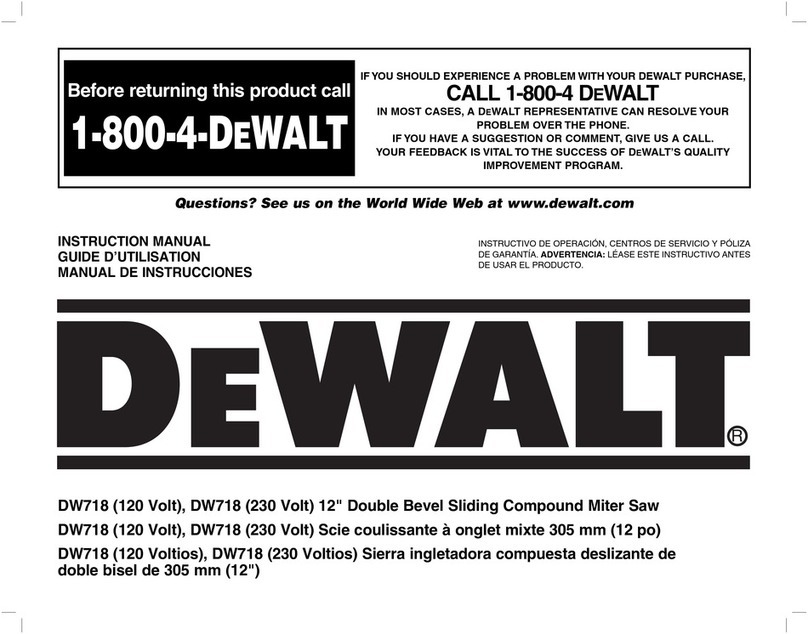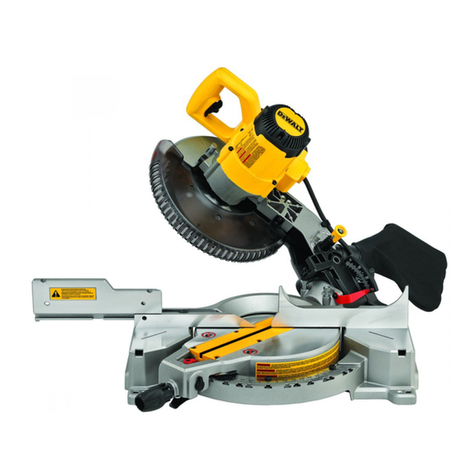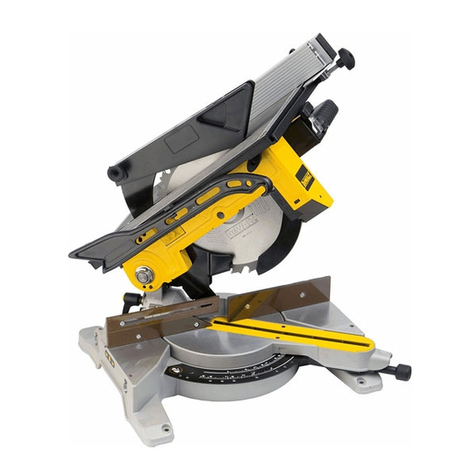
7
ENGLISH
10 . Connect dust extractionequipment.
ʵ If devices are provided for the connection of dust
extraction and collecting equipment, ensure these are
connected and properlyused.
11 . Do not abuse thecord.
ʵ Never yank the cord to disconnect it from the socket.
Keep the cord away from heat, oil and sharp edges. Never
carry the tool by itscord.
12 . Securework.
ʵ Where possible use clamps or a vice to hold the work. It
is safer than using your hand and it frees both hands to
operate thetool.
13 . Do notoverreach.
ʵ Keep proper footing and balance at alltimes.
14 . Maintain tools withcare.
ʵ Keep cutting tools sharp and clean for better and safer
performance. Follow instructions for lubricating and
changing accessories. Inspect tools periodically and if
damaged have them repaired by an authorized service
facility. Keep handles and switches dry, clean and free
from oil andgrease.
15 . Disconnecttools.
ʵ When not in use, before servicing and when changing
accessories such as blades, bits and cutters, disconnect
tools from the powersupply.
16 . Remove adjusting keys andwrenches.
ʵ Form the habit of checking to see that adjusting keys and
wrenches are removed from the tool before operating
thetool.
17 . Avoid unintentionalstarting.
ʵ Do not carry the tool with a finger on the switch. Be sure
that the tool is in the “off” position before pluggingin.
18 . Use outdoor extensionleads.
ʵ Before use, inspect the extension cable and replace
if damaged. When the tool is used outdoors, use
only extension cords intended for outdoor use and
markedaccordingly.
19 . Stayalert.
ʵ Watch what you are doing. Use common sense. Do not
operate the tool when you are tired or under the influence of
drugs oralcohol.
20 . Check for damagedparts.
ʵ Before use, carefully check the tool and mains cable to
determine that it will operate properly and perform its
intended function. Check for alignment of moving parts,
binding of moving parts, breakage of parts, mounting
and any other conditions that may affect its operation. A
guard or other part that is damaged should be properly
repaired or replaced by an authorized service centre
unless otherwise indicated in this instruction manual.
Have defective switches replaced by an authorized
servicecentre. Do not use the tool if the switch does not
turn it on and off. Never attempt any repairsyourself.
WARNING: The use of any accessory or attachment or
performance of any operation with this tool other than
those recommended in this instruction manual may
present a risk of personalinjury.
21 . Have your tool repaired by a qualifiedperson.
ʵ This electric tool complies relevant safety rules. Repairs
should only be carried out by qualified persons using
original spare parts; otherwise this may result in
considerable danger to theuser.
Additional Safety for Metal Saws
• Do not use saw blades which are damaged or deformed;
• Use only saw blades recommended by the manufacturer
which conform to EN 847-1;
• Do not use saw blades manufactured from high speed steel;
• Wear suitable personal protective equipment when necessary,
this could include:
ʵ hearing protection to reduce the risk of induced hearing
loss;
ʵ eye protection;
ʵ respiratory protection to reduce the risk of inhalation of
harmful dust;
ʵ gloves for handling saw blades (saw blades shall be
carried in a holder wherever practicable) and rough
material;
Maintenance and Servicing
• Operator’s instructions on factors influencing exposure to
noise (e.g. use of saw blades designed to reduce the emitted
noise, saw blade and machine maintenance);
• Report faults in the machine, including guards or saw blades,
as soon as they arediscovered.
Safe Operation
• Select the correct saw blade for the material to be cut;
• Do not use the saw to cut other materials than those
recommended by the manufacturer;
• Lifting and transportation information. To lift and support the
metal saw see FigureF.
• Do not use the saw without the guards in position, in good
working order and properly maintained;
• Keep the floor area around the machine level, well maintained
and free of loose materials e.g. chips and cut-offs;
• Provide adequate general or localised lighting;
• The operator is adequately trained in the use adjustment and
operation of the machine;
• Use correctly sharpened saw blades. Observe the maximum
speed marked on the saw blade;
• Ensure that any spacers and spindle rings used are suitable for
the purpose as stated by the manufacturer;
• Refrain from removing any cut-offs or other parts of the
workpiece from the cutting area while the machine is running
and the saw head is not in the rest position;
• Ensure that the machine is always stable and secure. (e.g. fixed
to a bench)
